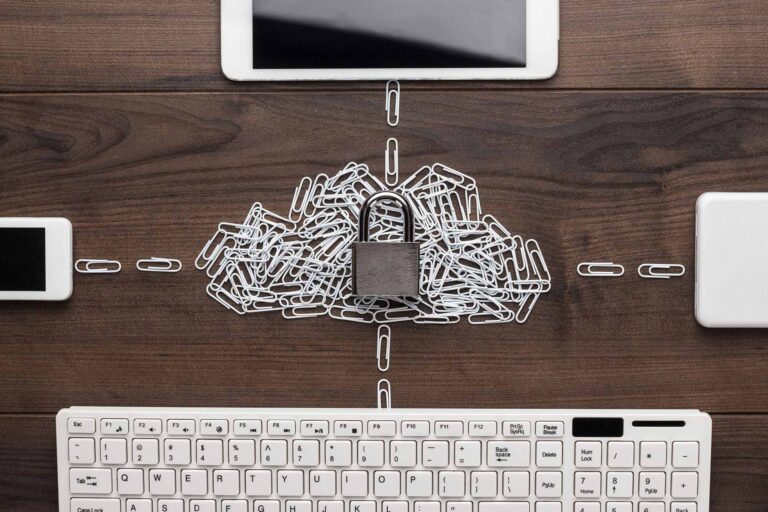The term ‘information technology’ is enough to induce panic in some people. The lexicon associated with computers is often a different language entirely – think ‘gigahertz’, ‘megapixel’ and ‘metadata’, just to name a few terms – however, the basic tenets of IT need not be as difficult to understand.
At Rule Technology, we abide by several ‘Rules’, all of which are geared towards delivering the best possible experience to our clients. And for some, that involves demystifying IT processes. Simple concepts are often dressed up in difficult terminology but at Rule Technology, we strip them back and communicate them to you in a concise, easy-to-understand manner.
In this post, we look specifically at five common IT myths and misconceptions so that you are able to sort the wheat from the technological chaff. The IT world needn’t be a scary place – we demystify some of it for you below.
Myth 1: Apple Macintosh computers cannot get viruses
While it is less common than in Microsoft Windows computers, Apple Macintosh computers can get malware (short for malicious software), including viruses. There are, however, several reasons why this myth is so prevalent.
Firstly, Microsoft Windows has the lion’s share – close to 90% – of the computer market and has done for many years. This means there are far more PCs than Macs, enabling Windows viruses to infect more computers and spread more quickly.
Secondly, computer hackers are generally more familiar with Microsoft Windows than Apple Macintosh operating systems, so they can more easily create viruses for that platform. And finally, Macs prevent the unauthorised execution of software. While PCs will try to run any program they’re asked to, even if it’s dangerous, Macs tend to block them, thereby limiting any damage.
So while viruses may be more common in PCs, they can still happen to Macs – they just need to be specifically designed that way.
Myth 2: Avoiding viruses is all about common sense
By now, we’re all familiar with viruses (not to mention internet scams… an inheritance to collect in Nigeria, anyone?) and how to go about avoiding them – don’t click on any dodgy-looking links, don’t trust unknown downloads and never, ever enter your password unless you’re certain you’re on the right site. Unfortunately, however, these common-sense tips are not enough to ensure your security.
Some of the malware used by hackers is insidious, in that it can sneak into your system silently and start to wreak havoc. Anti-virus software that can detect malicious programs when they arrive is essential. Think of it as being proactive, or driving defensively – with anti-virus software, you’re ready for any situation, no matter how dire.
Myth 3: The cloud is inherently insecure
We could have come up with a better name, really. The ‘cloud’ conjures images of opacity and a lack of clarity; clouds are soft and fluffy, not hard and strong. While there are incidences of the cloud being compromised in its still-early stages, there is also an argument that the risks are no greater than those threatening your workplace computer system. In short, your information in the cloud is no less safe than information you have stored in any other place.
A survey conducted by cloud security vendor Alert Logic assessed more than 200,000 security incidents among both cloud and on-premises systems and found that these two types of events were largely comparable in prevalence. They are now occurring at near-equivalent rates and while that may seem like cold comfort, it is to be expected, especially given the increasing number of businesses that are moving to the cloud. And besides, look how far we’ve come in virus protection. In another 10 years, the issue of cloud security may well be just another blip in our rear-view mirror.
Myth 4: One backup is enough
While large companies tend to use more than one method to backup their systems, smaller companies often do not and this can be a grave error. Backing up your system is one of those items on the checklist that, once it’s done, is ticked off and forgotten about. But really, you should be performing multiple backups and storing them in multiple locations. A single external hard drive at the same premises as your main system does not really cut it as a reliable backup.
Backing up to the cloud is an obvious solution, but also consider saving another hard copy at a different, secure premises. After all, if you don’t have all your eggs in one basket, they’re less likely to crack.
Myth 5: IT systems don’t need ongoing maintenance or monitoring
Most of us wouldn’t let our cars go unserviced for too long – we know the importance of regular check-ups. The same goes with IT systems. They are dynamic, complex and need their cogs tightened regularly to ensure they operate at maximum efficiency.
Just as cars need their engine, brakes and gear boxes looked at, IT systems need the following addressed, at least weekly:
- Security patch application
- Anti-virus software updates and monitoring
- Firewall updates and monitoring
- Backup monitoring
- Spam filter installations and updates
- Spyware detection and removal
- Disk space monitoring on workstations and servers
- Hardware monitoring
- Optimisation of systems for maximum speed
After all, it doesn’t matter how great your IT person is, if they’re not available if and when the system encounters a problem, it could very well equate to a business disaster.
Do any of those myths bring up questions for yourself and your data security? Contact us today to discuss solutions going forward.



